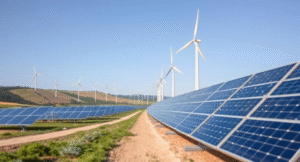Over the past few decades, governments around the world have committed to slow global warming as the amount of carbon dioxide released into the atmosphere increases, which is alarmingly warming the Earth.
Members of the European Parliament have set revised standard values of CO2 emissions for new cars and vans based on the more rigorous climate standards of the European Union. The new regulation implies a reduction of CO2 emissions from all new cars and vans in the EU by 100% compared to emissions from 2021, i.e. a ban on the sale of new gasoline and diesel-powered cars. The medium-term targets for reducing CO2 emissions (by 2030) are 55% for cars and 50% for vans. The final approval of these regulations is expected in March of the current year.
This regulation also includes the following measures:
- The latest in 2025, the Commission will propose a methodology for estimating CO2 emissions during the entire life cycle of cars and vans sold on the EU market and accompany it with legislative proposals if necessary.
- By the end of 2026, the Commission will monitor the difference between the limit values of emissions and the actual consumption of fuel and energy, submit a report on the methodology for adjusting the specific emissions of CO2 producers and propose further measures;
- Manufacturers who produce few vehicles per calendar year (from 1,000 to 10,000 new cars or from 1,000 to 22,000 new vans) can be granted an exemption until the end of 2035, while those who register less than 1,000 new vehicles per year have a permanent exemption;
- The existing mechanism to promote zero and low emission vehicles, which rewards manufacturers who sell more such vehicles (with emissions from 0 to 50 g CO2/km, e.g., electric vehicles and efficient plug-in hybrid vehicles) with lower CO2 emission reduction targets, will be adjusted to expected sales trends. For the period from 2025 to 2029, the reference value for vehicles with zero and low emissions will be 25% for new cars and 17% for new vans. For the year 2030, it is planned to abolish incentives.
- Starting in 2025, the Commission will publish every two years a Report on the assessment of progress in achieving zero-emission road transport.
However, car users will still be able to buy used cars with internal combustion after 2035.
A large influx of older cars is predicted for Bosnia and Herzegovina and markets that are not part of the European Union, and at the same time it is believed that, due to the harmonization of policies, this EU norm will be reflected in BiH as well. It is expected that by 2035, Bosnia and Herzegovina will have completely the same rules as the member states of the European Union, or will itself be a member.
We can conclude that we are witnessing a global energy transition project towards renewable energy sources, and that through synergy we will provide cleaner energy for future generations.






